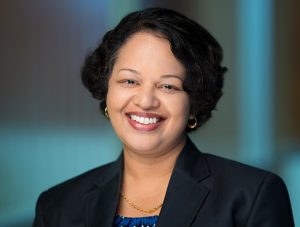In 1906, an earthquake struck the city of San Francisco. Registering at 7.8 magnitude, it’s estimated to have killed 6,000 people and left another 400,000 homeless. In amidst all the chaos, Colbert Caldwell and Benjamin Baker opened up a real estate company with an optimistic outlook on what could be raised from the rubble.
Caldwell and Banker brought integrity to the industry, ensuring that their buyers received all the profits from their purchases and taking only a commission from the sellers they represented. The business partners saw potential where others struggled to see past tragedy – over a hundred years later, it’s paid off.
Over the course of a hundred years, the company has seen what trends have sustained the test of time. Maybe due to their long history, Caldwell Banker seemed to have an uncanny ability for foretelling the market future and have strategically positioned themselves to be the place businesses turn to for all their real estate needs.
By the 1940’s, Coldwell Banker had outgrown their modest storefront on Sutter Street, San Francisco, and become one of the largest commercial real estate companies in the western United States. They went public in the 1960’s and 1970’s and used the capital to expand both their offerings and geographic range and establish themselves as a full-service provider in the real estate market.
The company rebranded itself in 1989 as CB Commercial under their new parent company, the Carlyle Group, and began the serious work of building themselves into a global industry leader. This represented a milestone for the organization as the 1990s marked a time aggressive growth and expansion due to acquisitions of companies in key markets.
When it comes to onboarding technology as part of their service offerings, CBRE is ready to move with the times. David Eisenberg was CEO at New York city start-up Floored – a company offering an interactive, three-dimensional mapping application that enabled users to virtually tour commercial property layouts – until someone came knocking at their door.
“Real estate folks are entrepreneurs at heart, they’re capitalists at heart, and so if there’s something better, cheaper, faster, they’ll take a look at it for sure,” Eisenberg said. “However, we found that you really have to prove it – you have to prove that it is faster, cheaper, better, and in the absence of proof, the industry can move somewhat slowly because there is an embedded risk-aversiveness to dealing with real estate.”
CBRE saw the potential, however, and purchased it for an undisclosed sum in 2017. Brokers now use the technology to help clients look for a new office space or for those looking to make renovations to an existing site. It’s meant to save a brokerage’s client some cash on architectural costs and time on touring spaces. The software has been folded into the company’s flagship tech product, CBRE Vantage.
Chandra Dhandapani is CBRE’s chief digital and technology officer and has been leading the campaign for the company’s pursuit of property technology – also known as proptech – and the Floored purchase is a first of its kind. “We’ve done mergers and acquisitions in the past, but the Floored deal was different it in that it was our first major tech-centric acquisition,” Dhandapani said. “We were looking to modernize our tech infrastructure, and Floored brings that.”
While Floored may be the company’s first major proptech procurement, they have been investing in tech for years. They signed a deal an enterprise agreement with the brokerage firm VTS which enabled CBRE to access their extensive leasing and management data collection. Vantage offers users tools for automation, visualization, data analytics, and other capabilities at all stages of real estate commercial cycle. It helps users with planning, transacting and management of property and portfolios and provides insights, efficiency and outcomes in an often fragmented and competitive market.
CBRE is now headquartered in Los Angeles and the world’s largest commercial real estate firm. They employ approximately 31,000 people and serve real estate owners, investors, and occupiers from more than 300 offices spanning the globe. They offer strategic advice and oversight of property sales and leasing; appraisal and valuation; development services; investment management; and research and consulting services.
























